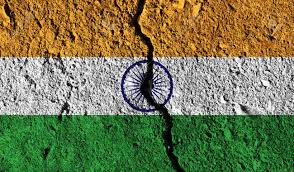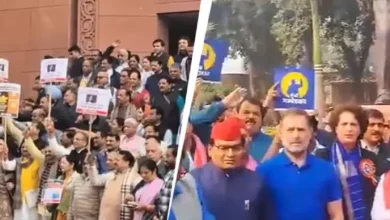Growing division into two blocks may lead to India’s fragmentation: Report

London: The British newspaper, The Economist, has highlighted in its analysis the growing division within India into two distinct blocs, with the Southern Bloc experiencing prosperity and advancement, while the Northern Bloc lags behind, raising concerns about the potential fragmentation of India.
According to Kashmir Media Service, the Northern Bloc is characterized by policies favoring the Hindi language, the promotion of a male Hindu identity, and the marginalization of Muslims. The newspaper notes that Narendra Modi, as India’s most powerful Prime Minister in recent history, has prioritized the promotion of Hindu nationalism alongside economic development.
In contrast, the Southern region of India, where wealth is concentrated, shows less support for Modi’s party. The Bharatiya Janata Party (BJP) relies more on the economically disadvantaged, densely populated, rural, Hindi-speaking regions of the North. This division is expected to be a significant factor in upcoming elections.
In the long term, this division could lead to a dangerous situation, potentially resulting in a constitutional crisis and destabilizing India’s unified market. Geographical divisions often have profound impacts on the development trajectories of nations.
Among India’s 28 states, the Southern bloc, consisting of Andhra Pradesh, Karnataka, Kerala, Tamil Nadu, and Telangana, collectively holds 20% of the population. These states boast urbanization, prosperity, effective governance, education, and property rights. The Southern Bloc has fostered entrepreneurship and developed a sophisticated financial system. Since 1993, the South’s contribution to India’s GDP has risen from 24% to 31%. International investors are drawn to the South for its business potential.
The Southern Bloc contributes 46% of electronic revenue, 46% of IT services, and 66% of industrial revenue. It is also home to 79% of multinational companies’ global auditors, lawyers, designers, architects, and other professionals. Its political landscape significantly differs from that of the North, where Modi’s BJP lacks a strong presence.
In the 2019 elections, only 11% of BJP’s votes and a mere 10% of its parliamentary seats came from the South. Modi’s electoral successes do not necessarily translate into a genuine national mandate. This geographical divide poses a threat to India’s unity.
Even the Southern Bloc may face challenges beyond 2026 when parliamentary constituencies are redrawn. There is concern that the BJP might impose Hindi as the national language against the wishes of the South, further exacerbating tensions.








